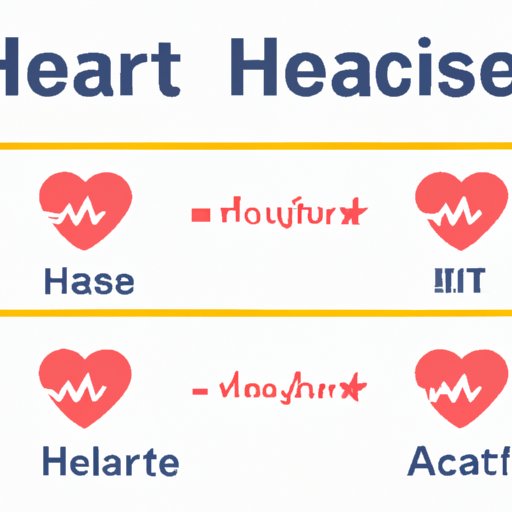Introduction
Heart rate, also known as pulse rate, is the number of times your heart beats per minute. It serves as an important indicator of overall health and physical activity levels. When you exercise, your heart rate increases in order to pump more oxygen-rich blood to your muscles. Knowing what is a good heart rate for exercise can help you achieve maximum benefits from your workout.
Comparing Resting Heart Rate to Target Heart Rate During Exercise
Your resting heart rate is the number of times your heart beats per minute when you’re not actively engaging in any physical activity. A normal resting heart rate for adults ranges from 60 to 100 beats per minute (bpm). During exercise, your target heart rate should be higher than your resting heart rate. The exact target heart rate will vary depending on a variety of factors, including your age and fitness level.
When exercising at an optimal heart rate, you can reap the many benefits that come with physical activity. These include improved cardiovascular health, increased energy levels, and better weight maintenance. Regular exercise also helps reduce stress and anxiety levels, boosts mood, and strengthens your bones and muscles.
Monitoring your heart rate during exercise is essential to ensure that you reach your target heart rate. You can do this by using a heart rate monitor, which is a device that measures your heart rate while you exercise. You may also use a smartphone app or manually check your pulse.

The Impact of Age and Fitness Level on Target Heart Rate
When determining your target heart rate during exercise, age and fitness level are two important factors to consider. Generally speaking, younger people tend to have higher target heart rates than older people. This is because their hearts are typically stronger and more efficient. Additionally, people who are more fit will typically have higher target heart rates than those who are less fit.
It’s also important to understand the difference between maximum and average heart rate during exercise. Maximum heart rate is the highest number of beats per minute your heart can achieve during exercise. Average heart rate refers to the average number of beats per minute your heart achieves throughout your entire workout.
An Overview of the American Heart Association’s Guidelines for Exercise Heart Rates
The American Heart Association (AHA) recommends exercising at a target heart rate that falls within specific zones, based on age and fitness level. The AHA suggests exercising at a moderate intensity, which is defined as 50 to 70 percent of your maximum heart rate. If you want to exercise at a vigorous intensity, the AHA recommends aiming for 70 to 85 percent of your maximum heart rate.
The AHA also recommends that you exercise within certain safety parameters to avoid over-exertion and potential injury. In addition to monitoring your heart rate, they suggest listening to your body and taking frequent breaks throughout your workout. They also recommend drinking plenty of fluids and avoiding extreme temperatures.
Conclusion
In conclusion, knowing what is a good heart rate for exercise is essential for achieving the maximum benefits of physical activity. Your target heart rate should be higher than your resting heart rate and will depend on your age, fitness level, and the intensity of your workout. For safety purposes, it is recommended to follow the American Heart Association’s guidelines for exercise heart rates. By monitoring your heart rate during exercise, you can ensure that you are reaching your optimal heart rate and reaping all the benefits of a healthy lifestyle.


